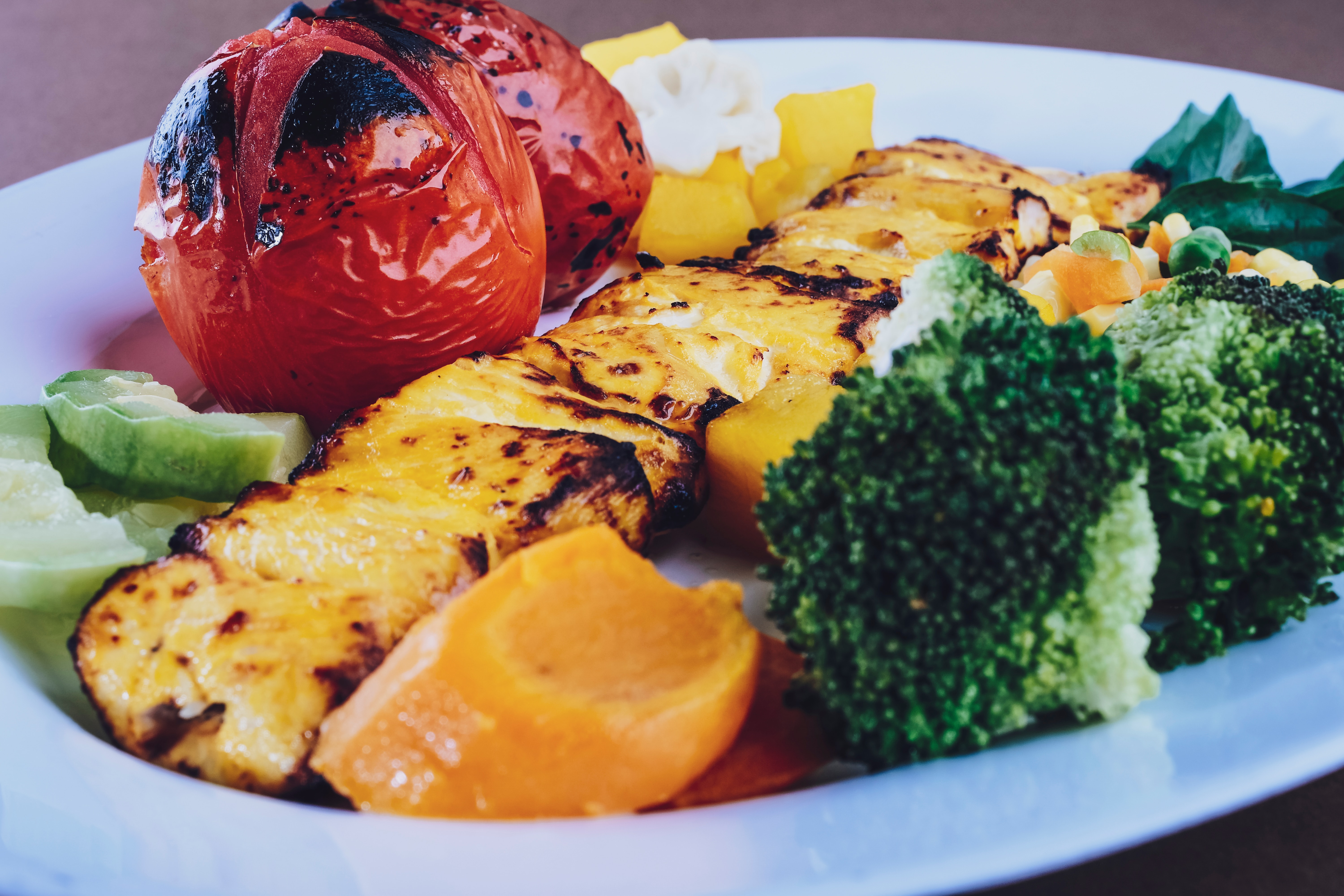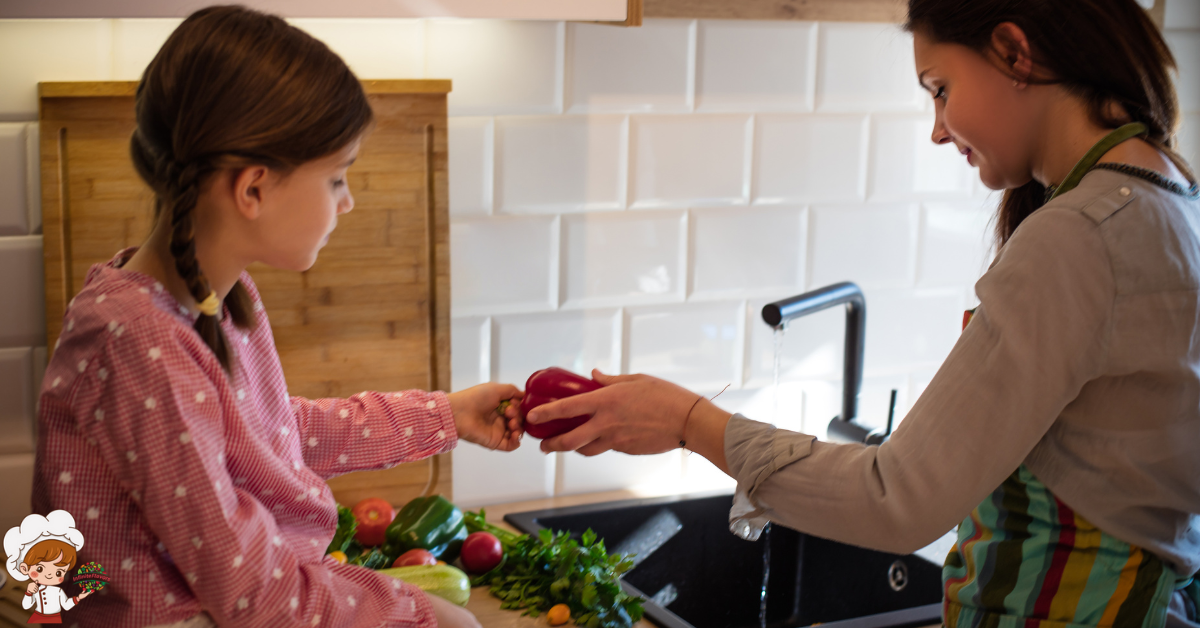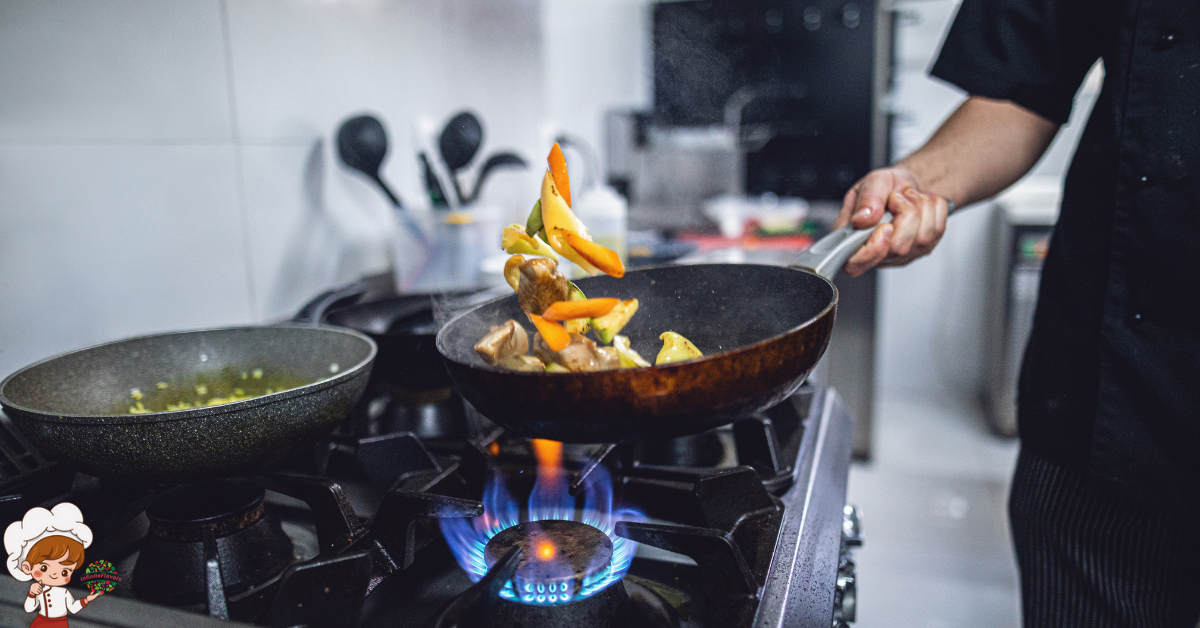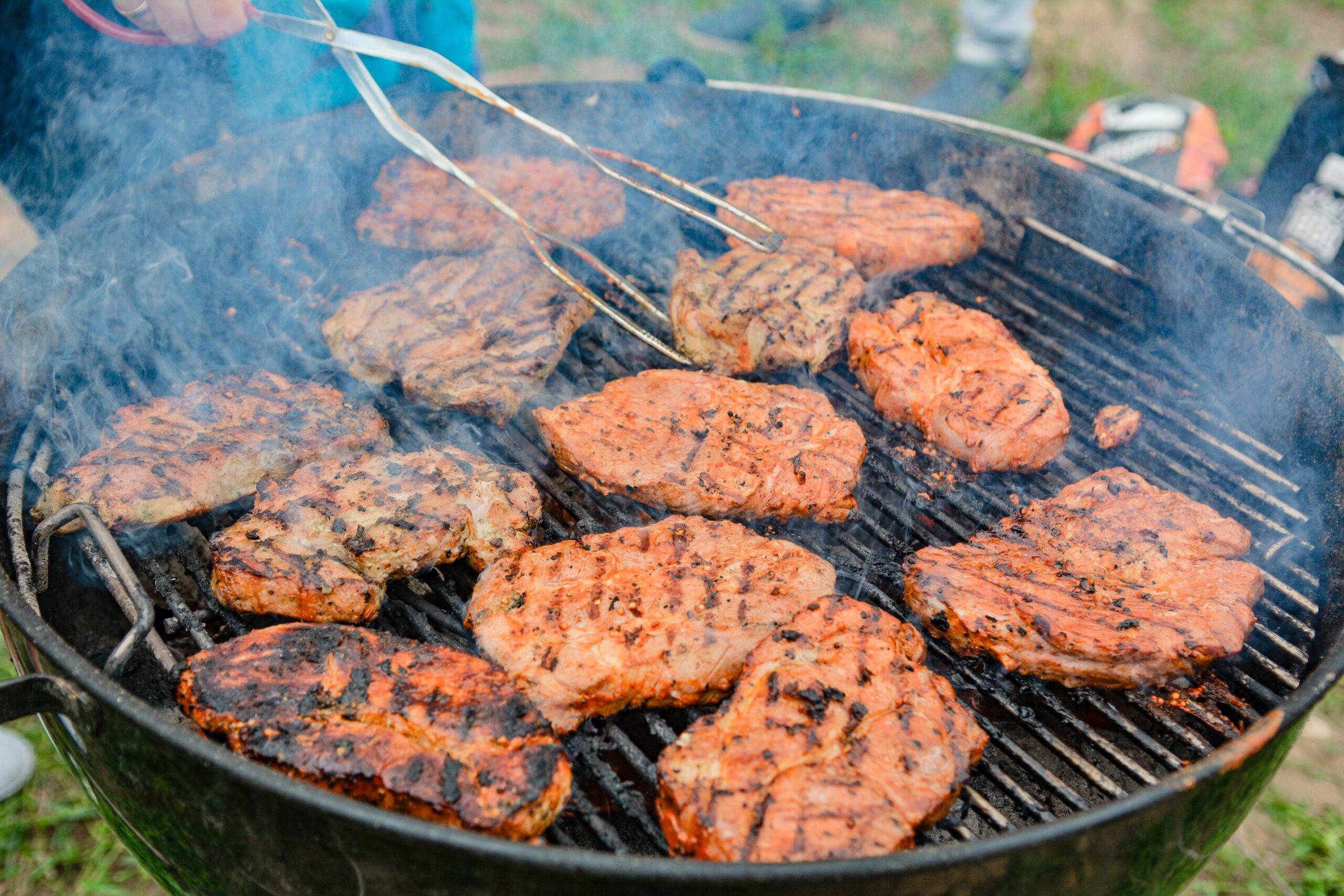The Best 15 Effective Techniques for Perfectly Grilled Vegetables

The Best 15 Effective Techniques for Perfectly Grilled Vegetables
So, you think you’ve got what it takes to grill vegetables to perfection? Well, my friend, get ready to enter the world of mouthwatering grilled veggies with these 15 effective techniques. From choosing the right vegetables to mastering the art of seasoning, this guide will have you grilling like a pro in no time. No more limp, sad veggies on your plate – we’re talking about perfectly charred, tender, and flavorful delights that will impress even the most skeptical carnivore. So, grab your tongs, fire up the grill, and get ready to elevate your veggie game to a whole new level. Let’s dive in and uncover the secrets to perfectly grilled vegetables.
Choose the Right Vegetables
To ensure the best results, choose a variety of fresh and vibrant vegetables for grilling. When it comes to grilled vegetable recipes, the key is to select vegetables that are firm and can hold their shape on the grill. You want vegetables that are not too soft or watery, as they may become mushy and fall apart during the grilling process.
Some great options for grilling are bell peppers, zucchini, eggplant, onions, and mushrooms. Bell peppers add a pop of color to your grilled vegetable medley and have a sweet and smoky flavor when cooked on the grill. Zucchini and eggplant have a mild taste and a tender texture that becomes even more delicious when grilled. Onions, when grilled, become caramelized and add a rich sweetness to any dish. And mushrooms, with their earthy flavor, become incredibly juicy and savory when cooked on the grill.
Before grilling, make sure to prepare your vegetables by washing and cutting them into evenly sized pieces. This will ensure that they cook evenly and are easier to handle on the grill. You can marinate your vegetables in a flavorful marinade or simply brush them with olive oil and sprinkle them with salt and pepper to enhance their natural flavors.
When grilling your vegetables, be sure to use direct heat and keep a close eye on them. Different vegetables have different cooking times, so you may need to adjust the heat or move the vegetables around to ensure even cooking. Remember to rotate them occasionally to achieve those beautiful grill marks and prevent burning.
Preheat Your Grill
Before you start grilling your vegetables, it’s important to preheat your grill to the optimal temperature. Preheating ensures that the grill grates are hot enough to sear the vegetables and create those delicious grill marks. This step is crucial for achieving perfectly grilled vegetables with a nice charred exterior and tender interior.
Optimal Grilling Temperature
Start by preheating your grill to the optimal temperature for perfectly grilled vegetables. Achieving the desired doneness of your vegetables depends on getting the temperature just right. The optimal grilling temperature for vegetables is around 400-450 degrees Fahrenheit. This high heat helps to caramelize the natural sugars in the vegetables, creating a delicious charred exterior while maintaining a tender interior.
Preheating your grill is crucial because it ensures even cooking and prevents sticking. It allows the vegetables to cook quickly, sealing in their natural flavors and preserving their nutrients. A properly preheated grill also creates those beautiful grill marks that add a touch of visual appeal to your dish.
To preheat your grill, simply turn it on and set the burners to high heat. Close the lid and let it heat up for about 10-15 minutes. This will give you the perfect cooking surface for your vegetables.
Importance of Preheating
One important step in achieving perfectly grilled vegetables is to ensure you preheat your grill. Preheating your grill not only helps to ensure even cooking, but it also has several other benefits that contribute to the overall grilling experience. Here are three important reasons why preheating is crucial for grill safety and achieving delicious grilled vegetables:
- Food safety: Preheating your grill helps to kill any bacteria or pathogens that may be present on the grates. This reduces the risk of foodborne illnesses and ensures that your vegetables are safe to consume.
- Even cooking: Preheating allows the grill grates to reach the desired temperature, ensuring that your vegetables cook evenly. This prevents some parts from being overcooked while others remain undercooked.
- Enhanced flavor: Preheating the grill creates a sear on the vegetables, resulting in a delicious caramelized crust. This adds a smoky flavor and enhances the overall taste of your grilled vegetables.
Clean and Oil the Grill Grates
To achieve perfectly grilled vegetables, begin by cleaning and oiling the grill grates. Properly maintaining your grill is essential for successful grilling sessions. Over time, grates can accumulate food residue, grease, and debris, which can affect the flavor of your vegetables and even cause flare-ups. To prevent this, follow these grill cleaning tips to ensure your grates are spotless and ready for use.
Start by preheating your grill to a high temperature. This will help to burn off any remaining food particles and loosen any stubborn grease. Once the grates are hot, use a grill brush to scrub away any residue. Make sure to clean both the top and bottom of the grates, as well as the sides. For stubborn stains or residue, you can also use a mixture of water and dish soap to help break it down. After scrubbing, rinse the grates thoroughly and let them dry completely.
Once the grates are clean, it’s time to oil them. Oiling the grates helps to prevent sticking and ensures your vegetables have a beautiful charred exterior. Before adding the vegetables, lightly brush the grates with a high-heat oil, such as canola or vegetable oil. Be sure to oil the grates evenly, ensuring all areas are covered. This will create a non-stick surface and enhance the flavor of your grilled vegetables.
Cut Vegetables Into Even-Sized Pieces
To achieve perfectly grilled vegetables, continue by cutting your vegetables into even-sized pieces. This step is crucial because it ensures that all the vegetables cook evenly and at the same time. When the pieces are of different sizes, some may end up overcooked while others remain undercooked. Follow these grilling techniques to cut your vegetables into even-sized pieces:
- Start by selecting vegetables that are similar in size. This will make it easier to cut them into uniform pieces. For example, if you’re grilling bell peppers, choose ones that are approximately the same size so that you can cut them into consistent slices or chunks.
- Use a sharp knife to slice the vegetables into equal thickness. This will help them cook at the same rate and ensure that they are tender and flavorful. Whether you’re cutting zucchini, eggplant, or onions, aim for slices that are about 1/4 to 1/2 inch thick.
- If you’re grilling smaller vegetables like cherry tomatoes or mushrooms, consider using skewers. Thread them onto skewers, alternating with other vegetables, to create kebabs. This not only helps with even cooking but also makes it easier to handle the vegetables on the grill.
Marinate or Season the Vegetables
Now that you’ve got your vegetables all cut and ready, it’s time to give them some flavor. Let’s talk about the best marinades for veggies and some seasoning tips that will make your grilled vegetables truly irresistible. But before we dive into that, let’s quickly address the age-old debate of grilling vs marinating – which technique will give you the tastiest results?
Best Marinades for Veggies
For perfectly grilled vegetables, enhance their flavors by marinating or seasoning them with the best marinades. Marinating vegetables not only adds flavor but also helps to tenderize them, making them even more delicious and enjoyable. Here are three fantastic marinades that will take your grilled veggies to the next level:
- Balsamic Glaze: Create a tangy and sweet marinade by combining balsamic vinegar, honey, minced garlic, and olive oil. This marinade works well with a variety of vegetables, such as bell peppers, zucchini, and mushrooms.
- Asian-inspired Marinade: Mix soy sauce, ginger, garlic, lime juice, and a touch of sesame oil for an umami-packed marinade. This is perfect for grilling vegetables like asparagus, bok choy, and snap peas.
- Mediterranean Herb Marinade: Combine lemon juice, olive oil, minced garlic, and a medley of fresh herbs like basil, oregano, and thyme. This marinade complements vegetables like eggplant, tomatoes, and red onions beautifully.
Seasoning Tips for Vegetables
Enhance the flavor of your grilled vegetables by marinating or seasoning them with a variety of delicious options. When it comes to seasoning vegetables for grilling, there are endless possibilities. You can opt for simple yet tasty combinations like olive oil, salt, and pepper. Or, you can experiment with bolder flavors by adding spices such as paprika, cumin, or chili powder.
For a tangy twist, try marinating your veggies in a mixture of lemon juice, garlic, and herbs. If you’re feeling adventurous, go for Asian-inspired flavors like soy sauce, ginger, and sesame oil. The key is to find flavor combinations that complement the natural sweetness and crispness of the vegetables. So, don’t be afraid to get creative with your seasoning choices and take your grilled vegetables to a whole new level of deliciousness.
Grilling Vs Marinating
To achieve perfectly grilled vegetables, you must decide whether to grill or marinate them. Both techniques have their own advantages and can result in delicious and flavorful vegetables. Here are three factors to consider when deciding between grilling and marinating:
- Grilling techniques: Grilling vegetables without marinating them allows their natural flavors to shine through. The high heat of the grill caramelizes the sugars in the vegetables, creating a smoky and charred exterior with a tender interior.
- Flavor infusion: On the other hand, marinating vegetables before grilling can add an extra layer of flavor. A marinade made with herbs, spices, and oil can penetrate the vegetables, infusing them with delicious tastes and aromas.
- Time constraints: Grilling vegetables without marinating them is a quicker option, perfect for those times when you’re short on time. Marinating, on the other hand, requires some planning ahead to allow the flavors to develop.
Ultimately, the choice between grilling and marinating depends on your personal preference and the specific vegetables you’re working with. Experiment with both techniques to discover your favorite way to enjoy perfectly grilled vegetables.
Use Skewers or Grill Baskets
Secure your vegetables on skewers or in grill baskets to ensure that they cook evenly and don’t fall through the grates. Using skewers or grill baskets is one of the most effective grilling techniques for perfectly grilled vegetables. These tools provide a convenient and efficient way to cook your veggies while maintaining their shape and texture.
When it comes to skewers, there are a few options to consider. Metal skewers are durable and reusable, making them a great investment for frequent grillers. They also conduct heat, helping to cook your vegetables from the inside out. If you prefer wooden skewers, make sure to soak them in water for at least 30 minutes before grilling. This prevents them from burning on the grill and keeps your vegetables secure.
Grill baskets, on the other hand, are a fantastic alternative cooking method for delicate vegetables that may fall apart or slip through skewers. These baskets are designed with small holes that allow heat and smoke to circulate, ensuring even cooking. They also come in various sizes and shapes, allowing you to grill a variety of vegetables at once. Simply toss your vegetables in some olive oil and seasoning, then place them in the grill basket and cook to perfection.
Whether you choose skewers or grill baskets, make sure to evenly distribute your vegetables to ensure they cook uniformly. Flip them occasionally to prevent burning and promote even charring. By using skewers or grill baskets, you can easily achieve that coveted smoky flavor and perfectly grilled vegetables every time. So, don’t hesitate to secure your veggies and elevate your grilling game!
Control the Heat and Cooking Time
Maintaining optimal heat levels and monitoring cooking time is essential for achieving perfectly grilled vegetables. To ensure that your veggies are cooked to perfection, follow these grilling techniques:
- Preheat your grill: Before placing your vegetables on the grill, make sure it is preheated to the right temperature. This will help to sear the vegetables quickly, locking in the moisture and flavors. A medium-high heat is generally recommended for most vegetables.
- Create heat zones: It’s important to create different heat zones on your grill. This allows you to have direct heat for searing and indirect heat for gentle cooking. By moving the vegetables around the grill, you can control the level of doneness and prevent them from burning.
- Keep an eye on the cooking time: Different vegetables require different cooking times. Leafy greens like spinach or lettuce will wilt quickly, while dense vegetables like potatoes or carrots will take longer to cook. It’s crucial to keep an eye on the clock and check for doneness regularly. A slight char or grill marks indicate that the vegetables are cooked to perfection.
When it comes to grilling vegetables, timing is everything. Overcooking can result in mushy vegetables, while undercooking can leave them raw and unappetizing. By controlling the heat and cooking time, you can achieve perfectly grilled vegetables that are tender, flavorful, and bursting with natural goodness. So fire up your grill, follow these techniques, and get ready to enjoy a delicious and healthy grilled vegetable feast.
Flip the Vegetables at the Right Moment
Make sure to flip your vegetables at the perfect moment to achieve perfectly grilled results. Timing and flipping are crucial grilling techniques that can make or break your vegetable dish. When it comes to grilling vegetables, it’s all about achieving that ideal balance between charred and tender, and flipping plays a vital role in achieving that balance.
The first thing to consider is when to flip your vegetables. You don’t want to flip them too early, or they might stick to the grill or fall apart. On the other hand, flipping them too late can result in uneven cooking or even burning. The key is to wait for the vegetables to develop some char marks on one side before flipping them. This will ensure that they have cooked enough to release easily from the grill, while still maintaining their shape.
When flipping your vegetables, be gentle yet confident. Use a spatula or tongs to carefully lift and turn each piece. Avoid using a fork, as it can pierce the vegetables and cause them to lose their juices. The goal is to flip them in one fluid motion, ensuring that each side gets equal contact with the heat.
Timing is crucial when it comes to flipping vegetables. Keep a close eye on them while grilling, as different vegetables require different cooking times. Thicker vegetables like peppers or eggplants may need a bit more time on the grill, while thinner ones like zucchini or asparagus cook more quickly. By paying attention to the timing and flipping at the right moment, you’ll achieve perfectly grilled vegetables that are charred on the outside, tender on the inside, and bursting with flavor.
Add Smoky Flavor With Wood Chips or Charcoal
Ready to take your grilled vegetables to the next level? Adding wood chips or charcoal to your grill will infuse them with a smoky flavor that will make your taste buds dance. But which one should you choose? Wood chips offer a variety of flavors, like mesquite or hickory, while charcoal provides a classic smokiness. Let’s explore the benefits of each to help you decide which route to take for the ultimate grilled veggie experience.
Wood Chips Vs. Charcoal
Enhance the smoky flavor of your grilled vegetables by using either wood chips or charcoal. Both options have their advantages and it ultimately comes down to personal preference. Here are the pros and cons of each:
- Wood Chips:
- Pros: Wood chips can infuse a rich and distinct smoky flavor into your vegetables, adding depth to their taste. They come in a variety of flavors, such as hickory, mesquite, and applewood, allowing you to experiment and find your favorite.
- Cons: Wood chips require more preparation time as they need to be soaked in water before use. They also burn faster compared to charcoal, so you may need to replenish them more frequently during grilling.
- Charcoal:
- Pros: Charcoal provides a consistent and long-lasting heat source, allowing for even cooking of your vegetables. It also gives a smoky flavor, although it may not be as pronounced as with wood chips.
- Cons: Charcoal can sometimes impart a slightly chemical taste to the food, especially if it is not fully burned. It also requires more attention during grilling to ensure proper heat management.
Now that you know the pros and cons of wood chips and charcoal, you can choose the option that aligns with your taste preferences and grilling style.
Smoky Flavor Benefits?
To achieve a smoky flavor in your grilled vegetables, you can add wood chips or charcoal, both of which offer distinct benefits. Wood chips are a popular choice for enhancing the flavor of grilled vegetables. They come in various flavors, such as hickory, mesquite, and applewood, each adding its own unique taste to your food. Soak the wood chips in water for about 30 minutes before grilling to prevent them from burning too quickly.
Charcoal, on the other hand, provides a consistent heat source, giving your vegetables a smoky flavor that is hard to achieve with other grilling techniques. It is important to let the charcoal reach the right temperature before placing your vegetables on the grill. Experiment with different combinations of wood chips and charcoal to find the perfect smoky flavor for your grilled vegetables.
Use Indirect Heat for Larger or Denser Vegetables
To achieve perfectly grilled larger or denser vegetables, start by using indirect heat. This technique ensures that the vegetables cook evenly, allowing the flavors to develop and the textures to become tender. Here are three reasons why using indirect heat is essential for grilling larger or denser vegetables:
- Even Cooking: Indirect heat provides a more gentle and consistent cooking environment, which is ideal for larger or denser vegetables. Unlike direct heat, which can cause the outer layers to burn before the inside is fully cooked, indirect heat allows the vegetables to cook through evenly. This results in vegetables that are perfectly tender and bursting with flavor.
- Preserves Nutrients: When grilling larger or denser vegetables, it’s important to ensure that they retain their nutritional value. Indirect heat helps to preserve the vitamins and minerals in the vegetables by minimizing the loss of nutrients that can occur with high heat. This means that you can enjoy your grilled vegetables knowing that they are not only delicious but also packed with essential nutrients.
- Enhanced Flavors: Indirect heat allows the natural flavors of the vegetables to shine through. The slower cooking process allows the vegetables to caramelize and develop a rich, smoky flavor without charring or burning. Whether you’re grilling thick slices of eggplant, hearty Portobello mushrooms, or robust cauliflower steaks, using indirect heat will ensure that the flavors are perfectly balanced and satisfying.
To utilize indirect heat, simply set up your grill with a two-zone fire. This means that you have a hot direct heat zone and a cooler indirect heat zone. Place your larger or denser vegetables in the indirect heat zone and let them cook slowly, turning occasionally for even cooking. Whether you’re using a gas or wood grill, mastering the art of indirect heat will take your grilled vegetables to the next level. So fire up the grill, grab your favorite veggies, and get ready to enjoy perfectly grilled deliciousness!
Grill Vegetables With the Right Moisture Content
Maintaining optimal moisture content is crucial when grilling vegetables for maximum flavor and tenderness. Grilling vegetables with the right moisture levels can make a significant difference in the taste and texture of the final dish. Here are some effective grilling techniques to ensure your vegetables are perfectly moist and delicious.
First and foremost, it is important to choose vegetables that have a high water content. Vegetables like zucchini, bell peppers, and mushrooms are excellent options. These vegetables not only retain moisture well but also develop a delicious charred flavor when grilled.
Before grilling, it is essential to prepare the vegetables properly. Start by washing them thoroughly and then patting them dry. Excess moisture on the surface of the vegetables can prevent them from getting that perfect char and can cause them to steam rather than grill.
Next, consider marinating your vegetables. This not only adds flavor but also helps to lock in moisture. A simple marinade of olive oil, garlic, herbs, and a splash of lemon juice can work wonders. Allow the vegetables to marinate for at least 30 minutes before grilling to ensure they absorb the flavors and stay tender and juicy.
When grilling, keep a close eye on the moisture levels. If the vegetables start to dry out, brush them with a little olive oil or marinade to keep them moist. Avoid overcooking, as this can lead to dry and tough vegetables. Aim for a slightly crisp texture while maintaining a juicy interior.
Avoid Overcrowding the Grill
To achieve perfectly grilled vegetables, it’s crucial to avoid overcrowding the grill. When you pile too many vegetables on the grill, they won’t cook evenly, resulting in some pieces being overcooked while others remain undercooked. Proper heat distribution is key to ensuring that each vegetable receives the right amount of heat, allowing for even cooking temperatures and maximizing flavor and texture.
Proper Heat Distribution
Achieving evenly distributed heat on your grill is essential for perfectly grilled vegetables. Proper heat distribution ensures that your vegetables cook evenly and avoid getting charred or undercooked. Here are three tips to help you achieve proper heat distribution:
- Preheat your grill: Before placing your vegetables on the grill, make sure it is preheated to the desired temperature. This allows the heat to distribute evenly and ensures consistent cooking.
- Arrange vegetables properly: Avoid overcrowding the grill by leaving enough space between each vegetable. Overcrowding can lead to uneven cooking as some vegetables may block the heat from reaching others.
- Use indirect heat: If you’re grilling larger or thicker vegetables, such as potatoes or whole bell peppers, consider using indirect heat. This means placing the vegetables away from the direct flames or heat source, allowing them to cook more slowly and evenly.
Even Cooking Temperatures
To ensure evenly cooked vegetables, it’s important to avoid overcrowding the grill. When you place too many vegetables on the grill at once, they end up steaming instead of grilling. This can result in uneven cooking, with some vegetables being undercooked and others overcooked. To avoid this, make sure to leave enough space between the vegetables on the grill.
This allows the heat to circulate evenly and ensures that each vegetable cooks at the same rate. If you have a lot of vegetables to cook, consider grilling them in batches. This way, you can give each vegetable the attention it deserves and achieve perfectly grilled vegetables every time. So, remember to avoid overcrowding the grill for even cooking temperatures and delicious results.
Maximizing Flavor and Texture
For optimal flavor and texture, ensure you don’t overcrowd the grill when grilling vegetables. Maximizing tenderness and enhancing natural flavors is crucial to creating delicious grilled vegetables. Here are three reasons why you should avoid overcrowding the grill:
- Proper air circulation: When the grill is overcrowded, the vegetables can’t receive enough heat and air circulation, resulting in uneven cooking. Some parts may be overcooked, while others remain undercooked, leading to a lack of tenderness.
- Enhanced caramelization: Overcrowding the grill prevents vegetables from achieving that coveted charred flavor and caramelization. Adequate space allows the vegetables to come into direct contact with the grill grates, resulting in beautiful grill marks and intensified natural flavors.
- Improved texture: By giving each vegetable enough space on the grill, you ensure that they cook evenly and have a desirable texture. Overcrowding can lead to steaming rather than grilling, resulting in vegetables that are soft and lack the desired smoky taste and crispy exterior.
Keep an Eye on Delicate Vegetables
You need to be vigilant when grilling delicate vegetables. These vegetables, like asparagus, mushrooms, and zucchini, require extra care to ensure they are cooked to perfection. To begin with, it’s important to properly prepare your vegetables before grilling. Start by washing them thoroughly and then patting them dry. This will help remove any dirt or residue that may be present. Next, you’ll want to slice your vegetables into evenly sized pieces to ensure they cook evenly on the grill. Asparagus should be trimmed and any tough ends removed, while mushrooms can be left whole or sliced depending on your preference. Zucchini should be sliced into rounds or lengthwise strips, whichever you prefer.
Once your vegetables are prepared, it’s time to grill them. Preheat your grill to medium-high heat and lightly oil the grates to prevent sticking. Place your delicate vegetables directly on the grill, making sure to leave enough space between each piece for proper heat circulation. Keep a close eye on them as they cook, as delicate vegetables can burn quickly if left unattended. Use tongs or a spatula to flip the vegetables halfway through cooking to ensure even browning.
As delicate vegetables cook, they will become tender and develop a delicious charred flavor. The exact cooking time will vary depending on the size and thickness of the vegetables, so it’s important to test for doneness by piercing them with a fork or knife. They should be tender, but still have a slight crunch.
With these grilling tips and proper vegetable prep, you’ll be able to grill delicate vegetables to perfection. Enjoy the delicious flavors and textures that grilling brings out in these vegetables.
Use Foil or a Grill Mat for Smaller or Delicate Vegetables
Keep your smaller or delicate vegetables from falling through the grill grates by using foil or a grill mat. This is a simple yet effective technique that can make a big difference in your grilling experience. Here are three reasons why you should consider using foil or a grill mat for grilling smaller or delicate vegetables:
- Prevents vegetables from falling through: When grilling smaller or delicate vegetables like cherry tomatoes, asparagus, or mushrooms, there’s always a chance that they might slip through the grill grates and be lost forever. Using foil or a grill mat provides a protective barrier that ensures your veggies stay intact and don’t go to waste.
- Allows for even cooking: Foil or a grill mat helps distribute heat evenly, ensuring that your smaller or delicate vegetables are cooked to perfection. Without a barrier, direct contact with the grill grates might cause some parts of the vegetables to char while others remain undercooked. Using foil or a grill mat eliminates this issue, resulting in consistently cooked vegetables.
- Saves time on cleanup: Grilling smaller or delicate vegetables directly on the grill grates can result in some stubborn residue that’s difficult to clean. Foil or a grill mat simplifies the cleaning process by providing a non-stick surface. After grilling, all you need to do is remove the foil or grill mat and dispose of it, saving you valuable time and effort.
Serve and Enjoy Your Perfectly Grilled Vegetables
After grilling your perfectly cooked vegetables on foil or a grill mat, it’s time to serve and enjoy your delicious culinary creation. But before you dig in, let’s talk about some grilling techniques and presentation ideas that will elevate your dish to the next level.
First, let’s discuss grilling techniques. One option is to serve the vegetables as they are, straight off the grill. This will give you that smoky flavor and slightly charred texture that is so irresistible. Another technique is to toss the grilled vegetables in a flavorful dressing or marinade. This will add an extra layer of taste and enhance the overall experience. You can also consider grilling different types of vegetables together to create a colorful and vibrant platter. This will not only look visually appealing but will also provide a variety of flavors and textures.
Now let’s move on to presentation ideas. One simple yet elegant way to serve grilled vegetables is on a large platter, arranged in a visually pleasing manner. You can group similar vegetables together or create a beautiful pattern using different colors and shapes. Another idea is to serve the grilled vegetables as a side dish or a topping for grilled meats or salads. This will add a burst of flavor and freshness to your main course. Lastly, you can also consider serving the grilled vegetables in individual portions, either in small bowls or on skewers. This will make it easier for your guests to enjoy and will also give your dish a restaurant-quality presentation.
Now that you have learned some grilling techniques and presentation ideas, it’s time to put them into practice. So fire up your grill, get those vegetables cooking, and get ready to savor the deliciousness of your perfectly grilled vegetables. Enjoy!
Frequently Asked Questions
How Long Should I Marinate My Vegetables Before Grilling Them?
You should marinate your vegetables before grilling them to enhance their flavor and tenderness. While the duration may vary, aim for at least 30 minutes. Alternatively, you can try using different seasonings or sauces for a unique taste.
Can I Use Frozen Vegetables for Grilling?
Yes, you can use frozen vegetables for grilling, but using fresh vegetables has its benefits. Fresh veggies have better texture and flavor. To grill frozen veggies effectively, thaw them first and marinate for added flavor.
What Are Some Recommended Wood Chip Flavors for Adding Smoky Flavor to Grilled Vegetables?
To add a smoky flavor to your grilled vegetables, recommended wood chip flavors include hickory, mesquite, and apple. However, if you don’t have wood chips, you can still grill vegetables without them and achieve a delicious outcome.
How Can I Prevent Smaller or Delicate Vegetables From Falling Through the Grill Grates?
To prevent smaller or delicate vegetables from falling through the grill grates, try using grill basket alternatives or grilling them with skewers. These options provide a secure way to cook your veggies without worrying about them slipping through.
Are There Any Vegetables That Should Not Be Grilled?
When grilling vegetables, it’s important to know which ones to avoid. Some vegetables, like leafy greens and cucumbers, are better off being enjoyed raw or cooked using other methods. Stick to heartier vegetables like peppers, zucchini, and eggplant for the grill.
Conclusion
Now that you have learned these 15 effective techniques for perfectly grilled vegetables, you can take your outdoor cooking skills to the next level. By choosing the right vegetables, preheating your grill, and using foil or a grill mat for delicate ones, you’ll achieve delicious and charred perfection every time. So fire up that grill, get creative with your marinades and seasonings, and enjoy the mouthwatering flavors of your perfectly grilled vegetables. Happy grilling!








